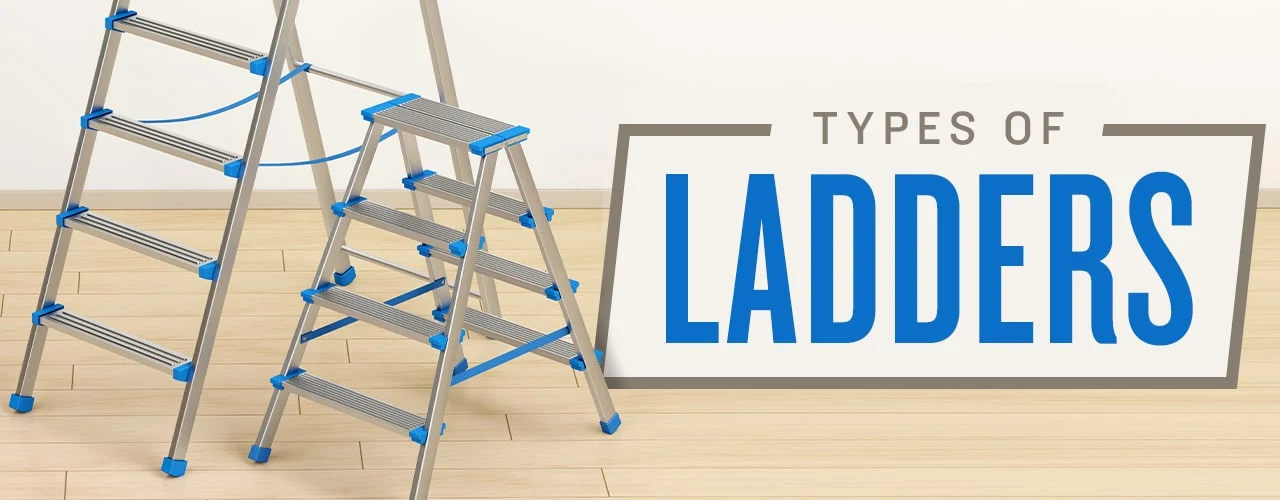When deciding which ladder types you need for your business, there are many things to consider beyond the duty rating and intended use of the ladder. For example, some ladders have an A-frame structure, making them more stable on potentially unstable surfaces. Some materials lend themselves better for outdoor use than others, while other designs make transportation and storage easier.
Below is a simple outline for each common ladder type, including their design, use, and typical height range.
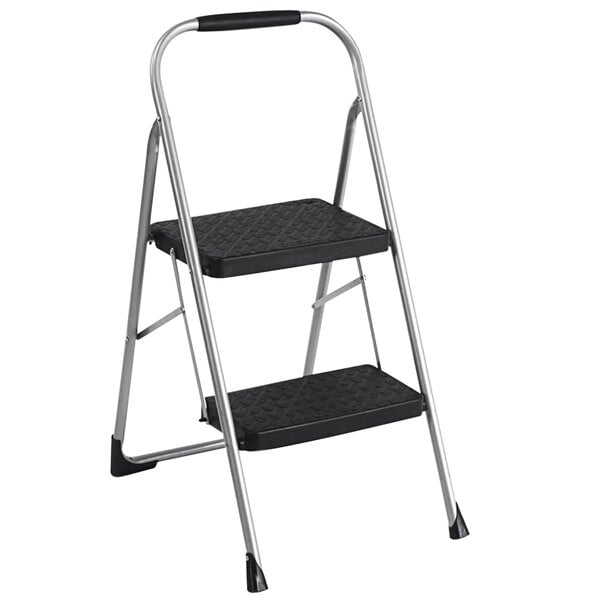
1. Step Stool
For less intensive tasks, consider purchasing a durable step stool. As the shortest ladder on this list, step stools typically have one or two sturdy steps on one side with a second side for extra support. Their foldable design makes them easy to set up, resituate, and store.
Uses: Indoor projects such as painting, changing lightbulbs, reaching high shelves and cupboards
Height: Less than 32 inches per step
Design: Upside-down V shape, foldable with a handle on top, four legs with a bottom support
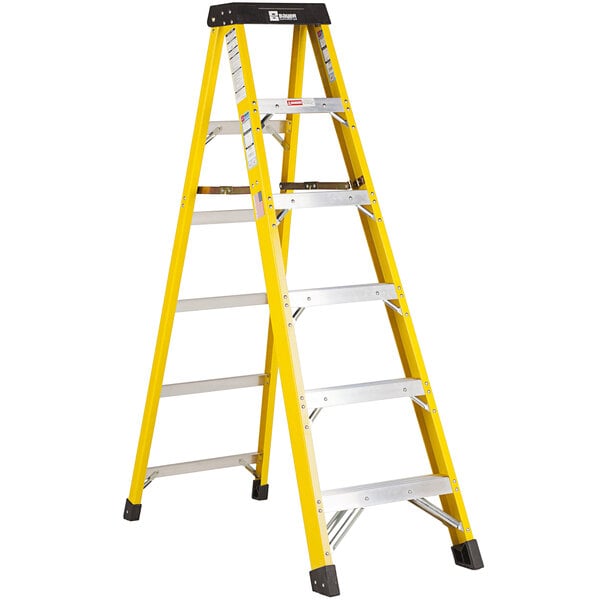
2. Step Ladder
A step ladder is a must-have for warehouses and businesses due to its versatility. Their self-supporting A-frame design makes them stable away from walls, allowing you to use them anywhere in a room without additional support. Some step ladders have two sides with rungs, while others only have rungs on one side, and most ladders have anti-skid material on the bottom to keep it stable. Since they tend to be shorter, people typically use step ladders for indoor and small outdoor projects. For warehouse settings, check out some of our industrial step ladders.
Uses: Indoor and small outdoor projects, such as painting, decorating, changing light bulbs, and simple maintenance
Height: 4 feet – 20 feet
Design: A-frame with four legs and support bar, hinges to fold for storage

3. Extension Ladder
As the tallest ladder on this list, an extension ladder features multiple sections to create an adjustable length. As a result, these ladders easily reach up to 72 feet for rooftop access or fixing high ceilings. However, extension ladders do not have support and must lean against a wall or stable shelf. For extra stability, a second person should hold the base of the ladder steady while the ladder is in use.
Uses: Outdoor projects and industrial settings, such as exterior repairs, painting, heavy-duty maintenance, or roofing
Height: Adjustable height, ranging from 32 feet – 72 feet depending on the number of sections
Design: Two legs with no additional support, two side rails with evenly spaced rungs, and two or three extendable sections
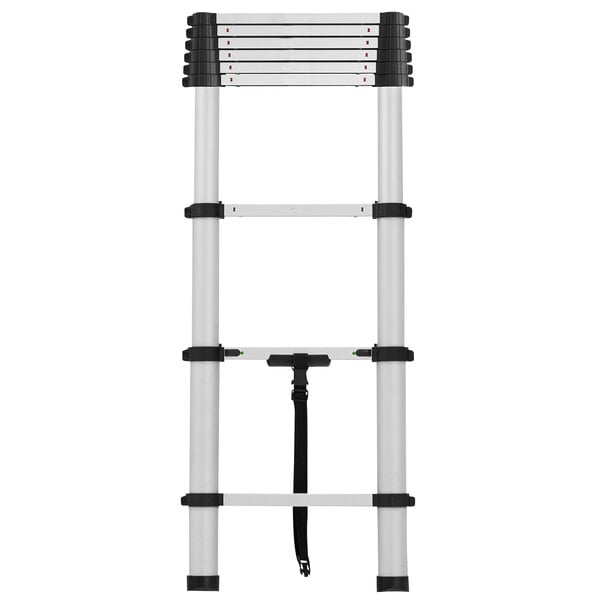
4. Telescoping Ladder
A telescoping ladder combines the adjustable height of an extension ladder and the easy storage design of a step ladder. To change the ladder height, extend the legs to the appropriate length and retract the back when finished. Because of this, telescoping ladders are versatile and can replace a step stool or a two-section extension ladder. Unlike step ladders, however, a telescoping ladder does not have extra support and must be leaned against a wall or sturdy frame.
Uses: Heavy-duty indoor projects and outdoor projects, such as painting walls, cleaning gutters, or general maintenance
Height: Adjustable, can range from 2 feet – 16 feet
Design: Straight ladder with an extendable section at the bottom, two side rails, and evenly spaced rungs
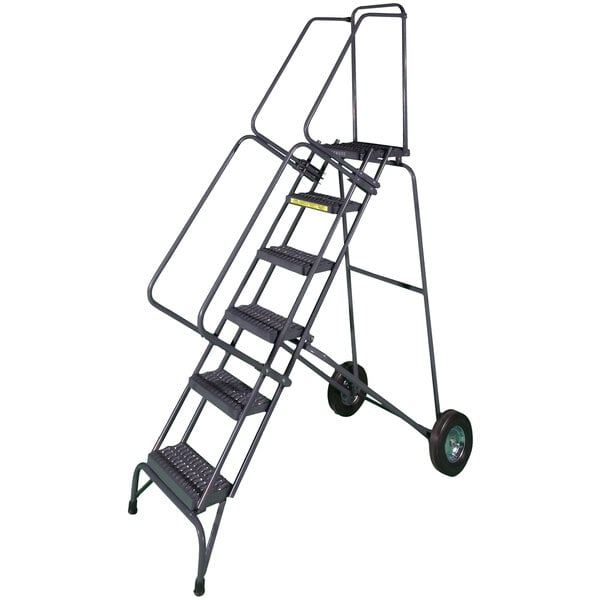
5. Folding Ladder
Similar to a step ladder, a folding ladder unfolds to rest on four legs for extra stability or extends for extra height. It’s ideal for projects on uneven surfaces due to its stable build and wide rungs. Additionally, folding ladders are easy to compact for storage and transportation.
Uses: Indoor or outdoor projects with uneven ground and lower reach requirement
Height: Adjustable, can reach up to 21 feet tall
Design: Upside-down V shape with broad rungs and hinges that extend the ladder, additional side safety railings for some models
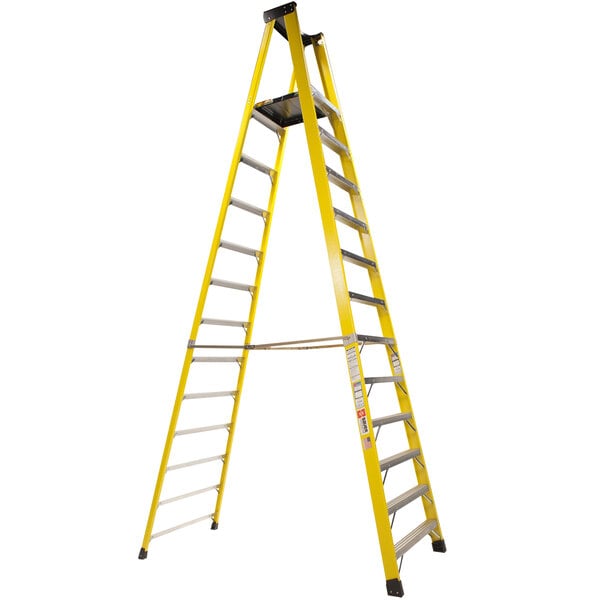
6. Platform Ladder
A platform ladder looks very similar to a step ladder, but its distinguishing feature is a platform placed along the top of the frame. The platform allows you to place items at the top of the ladder or stand on it yourself, which no other ladder supports. Like step ladders, it is self-supported and has one climbable side with hinges to allow easy folding. There are also industrial platform ladders on the market with steps and safety railings.
Uses: Long-lasting indoor or outdoor projects, such as painting, landscaping, installation, construction, or decorating
Height: 2 feet – 18 feet
Design: A-frame with hinges and one climbable side, stable platform attached to the top of the frame, adjustable elements available depending on the model
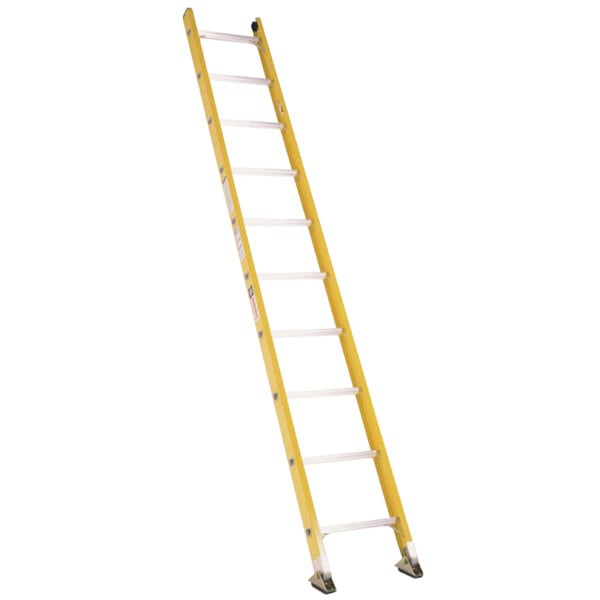
7. Straight Ladder
Also known as a single ladder, a straight ladder is the simplest of the different types of ladders. It has a single frame without extensions or hinges with only side rails bridged by rungs. Since it isn’t self-supporting, a straight ladder requires an anchor at the top for safe usage. To reposition and transport it, you must first descend the ladder. However, it takes up more storage space since it does not fold into a smaller shape.
Uses: Outdoor projects, such as roofing, construction, maintenance, or painting
Height: 4 feet – 30 feet
Design: Two side rails with evenly spaced rungs, anchor hooks at the top of some models
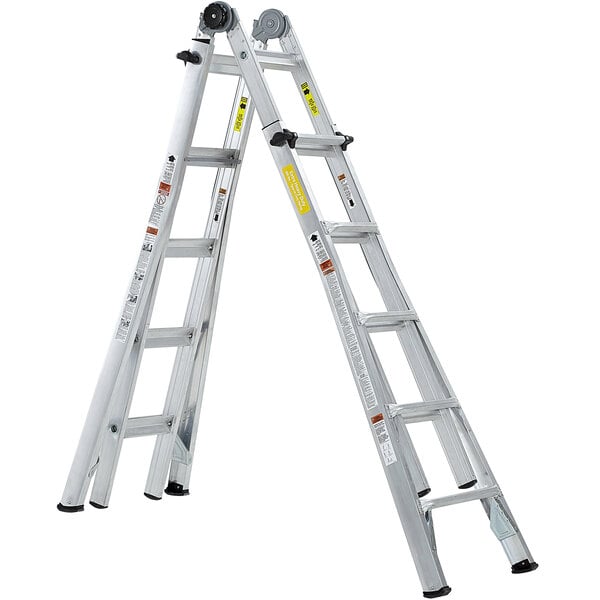
8. Multipurpose Ladder
Also called multi-way or multi-position ladders, a multipurpose ladder has more versatility than other ladders on this list. Its multiple hinges allow it to be adjusted and folded into different shapes to best suit the needs of a project, taking an A-frame shape or resembling a straight ladder as needed. You can even position some models to act as scaffolding. If you have multiple types of jobs and a small budget, a single multipurpose ladder can perform different functions to make it well worth the cost.
Uses: Indoor and outdoor projects, versatile depending on the positioning
Height: Varies, typically less than 26 feet
Design: Two side rails with rungs between, hinges positioned at multiple points along the side rails for adjustment and extension capabilities
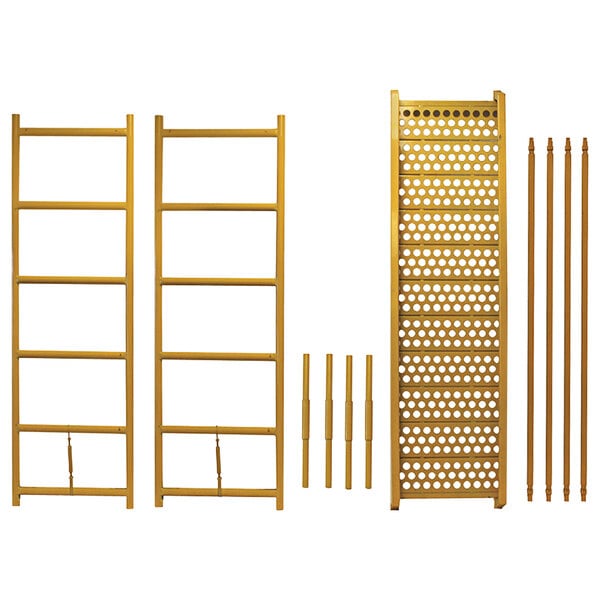
9. Trestle Ladder
A trestle ladder has one feature that differentiates it from all other types of ladders: it can support two people at once. This self-supporting ladder has two climbable sides with an adjustable length and a third ladder extending from the top. Additionally, its foldable design makes it easy to transport and store. Workers often use it to support scaffolding for construction jobs.
Uses: Heavy-duty construction projects
Height: Up to 20 feet, must not exceed the base length.
Design: A-frame trestle base with two climbable sides and an extension section protruding from the top of the frame.
What Are Ladders Made Of?
Several types of materials are used to make ladders, each option with its pros and cons. Typically, you’ll find ladders made of aluminum, wood, fiberglass, or steel. Before choosing a ladder, consider which ladder material aligns best with the job you plan to do and your budget. For example, working with electrical wires means you should probably avoid using an aluminum ladder.

